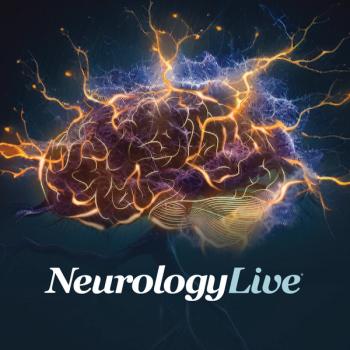
Hesham Abboud, MD, PhD, associate professor of neurology at Case Western Reserve University School of Medicine, talked about a study that suggested the possibility of predicting the future clinical phenotype of optic neuritis in patients early on.

Isabella Ciccone, Associate Editor, NeurologyLive®, has been with the team since September 2022. Follow her on Twitter @iciccone7 or email her at [email protected]

Hesham Abboud, MD, PhD, associate professor of neurology at Case Western Reserve University School of Medicine, talked about a study that suggested the possibility of predicting the future clinical phenotype of optic neuritis in patients early on.

Sodium oxybate, an endogenous GHB/GABAB receptor agonist, is clinically used to promote slow-wave sleep and reduce next-day sleepiness in disorders such as for patients with narcolepsy

Acute and sustained treatment with ulotaront did not show a statistically significant decrease from placebo in total number of cataplexy events and had no significant change in other symptomatic ratings over a 2-week treatment period.

Findings from a recent study showed that pain in the lower limbs of children and adolescents, commonly referred to as growing pains by providers, may reflect a precursor or comorbidity with migraine.

Positive findings from a phase 2b/3 study investigating blarcamesine, an investigational agent, demonstrated efficacy among patients with early Alzheimer disease.

Black adults who had a stroke because of a severe blockage of a major artery in the brain were younger, had higher rates of high blood pressure and type 2 diabetes, and had lower physical activity scores compared with nonBlack adults.

In a recent case-control study of 836 human serum samples, including 332 AQP4-IgG–positive and 504 negative samples, the novel immunodot assay showed a 99.4% sensitivity and a 99.2% specificity.

In a recent study on patients with narcolepsy type 1, those who used opioid drugs such as oxycodone and codeine were significantly associated with improved self-reported narcolepsy symptom severity.

A recent systematic review and meta-analysis showed that normal mean sleep latency in adults was 11.7 minutes using the earlier definition of sleep onset and 11.8 minutes using the later definition of sleep onset.

The presence of new asymptomatic MRI lesions among patients with NMOSD during the relapse-free period and at relapses was not associated with a shorter time to developing subsequent relapses.

Findings from a recent exploratory study suggest that assessing daily functioning in a more sensitive way may identify Alzheimer disease before a patient develops more pronounced cognitive changes.

Patients who have 1 of 4 recently identified genetic variants are at 10 times the risk of developing progressive multifocal leukoencephalopathy depending on specific treatments for their condition.

A recent systematic review showed that AQP4+NMOSD in patients with systemic lupus erythematosus can mimic neuropsychiatric manifestations, frequently occur after the onset of lupus or may predate, and necessitate indefinite treatment.

The combined preclinical and clinical data with neflamapimod suggest the therapy has potential to be the first disease-modifying treatment for dementia with Lewy Bodies, demonstrating a positive impact on cognition, function, and mobility.

The Rett Syndrome Behavior Questionnaire’s implementation as global outcome measure in FDA-approved trials was the result of its comprehensive nature since it includes behavior-related symptom questions as well as questions for regular behaviors.

Recent research highlights how advanced technology like remote monitoring devices or wearables and smartphone-based apps for sleep health can be delivered at the point of care to meet the needs of patients.

Researchers developed a novel “closed-loop” system that delivered electrical pulses in a brain region to synchronize brain activity recorded from another region in the brain to improve memory.

Antinuclear antibodies seem to be more associated with severe disease activity and poor prognosis among patients with NMOSD, which further implies that they may be potentially used as a prognostic marker for the disease.

In honor of World Duchenne Awareness Day, held September 7, 2023, get caught up on some of the latest news in Duchenne muscular dystrophy as the NeurologyLive® team shares some of our data updates.

Findings showed that autonomic symptom burden was slightly more severe in patients with multiple sclerosis compared with those with NMOSD, although the difference was not statistically significant.

Catch up on any of the neurology news headlines you may have missed over the course of August 2023, compiled all into one place by the NeurologyLive® team.

Preliminarily data from in vitro experiments demonstrated that cytomegalovirus antigenic peptides can activate peripheral antigen-specific T cells among patients with NMOSD.

Nicolaas Bohnen, MD, PhD, professor of radiology and neurology at the University of Michigan, discussed the main takeaways from his keynote lecture on posture and gait in Parkinson disease presented at the 2023 MDS Congress.

On average, clinician-rated TD severity, measured by AIMS, and patient-reported assessment of the physical, social and emotional impact of TD, measured by TDIS, decreased with one-capsule, once-daily valbenazine over 48 weeks.

Findings from an open-label extension trial among 45 patients with ALS showed a significant median survival benefit of 19.3 months and a significant 52% decreased risk of ALS clinical worsening events after treatment.

Parkinsonian syndromes, including multiple systems atrophy and progressive supranuclear palsy, have similar symptoms to Parkinson disease but are more distinct and each have corresponding therapies that are available for them.

Despite pamrevlumab being generally safe and well tolerated, the potential first-in-class connective tissue growth factor inhibitor antibody did not meet its primary endpoint in a phase 3 trial for ambulator Duchenne muscular dystrophy.

Russell Lebovitz, MD, PhD, chief executive officer and cofounder of Amprion, discussed the ongoing collaboration focused on exploring the role of misfolded synuclein traditionally associated with Parkinson disease and in various forms of dementia.

Findings from a real-world study among 120 patients with SMA suggests that nusinersen administration is safe and well tolerated, with only 30% of the patients mostly experiencing mild adverse events.

Despite the challenge of distinguishing tics from extra movements, machine learning technology could potentially help researchers with reducing time spent analyzing video recordings of patients with tic disorders.